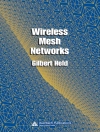The University of Arizona Artificial Intelligence Lab (AI Lab) Dark Web project is a long-term scientific research program that aims to study and understand the international terrorism (Jihadist) phenomena via a computational, data-centric approach. We aim to collect ‘ALL’ web content generated by international terrorist groups, including web sites, forums, chat rooms, blogs, social networking sites, videos, virtual world, etc. We have developed various multilingual data mining, text mining, and web mining techniques to perform link analysis, content analysis, web metrics (technical sophistication) analysis, sentiment analysis, authorship analysis, and video analysis in our research. The approaches and methods developed in this project contribute to advancing the field of Intelligence and Security Informatics (ISI). Such advances will help related stakeholders to perform terrorism research and facilitate international security and peace.
This monograph aims to provide an overview of the Dark Web landscape, suggest a systematic, computational approach to understanding the problems, and illustrate with selected techniques, methods, and case studies developed by the University of Arizona AI Lab Dark Web team members. This work aims to provide an interdisciplinary and understandable monograph about Dark Web research along three dimensions: methodological issues in Dark Web research; database and computational techniques to support information collection and data mining; and legal, social, privacy, and data confidentiality challenges and approaches. It will bring useful knowledge to scientists, security professionals, counterterrorism experts, and policy makers. The monograph can also serve as a reference material or textbook in graduate level courses related to information security, information policy, information assurance, information systems, terrorism, and public policy.
Tabella dei contenuti
Chapter 1. Dark Web Research Overview.- Chapter 2. Intelligence and Security Informatics (ISI): Research Framework.- Chapter 3. Terrorism Informatics.- Chapter 4. Forum Spidering.- Chapter 5. Link and Content Analysis.- Chapter 6. Dark Network Analysis.- Chapter 7. Interactional Coherence Analysis.- Chapter 8. Dark Web Attribute System.- Chapter 9. Authorship Analysis.- Chapter 10. Sentiment Analysis.- Chapter 11. Affect Analysis.- Chapter 12. Cybergate Visualization.- Chapter 13. Dark Web Forum Portal.- Chapter 14. Jihadi Video Analysis.- Chapter 15. Extremist Youtube Videos.- Chapter 16. Improvised Explosive Devices (IED) on Dark Web.- Chapter 17. Weapons of Mass Destruction (WMD) on Dark Web.- Chapter 18. Bioterrorism Knowledge Mapping.- Chapter 19. Women’s Forums on the Dark Web.- Chapter 20. U.S. Domestic Extremist Groups.- Chapter 21. International Falun Gong Movement on the Web.- Chapter 22. Botnets and Cyber Criminals.












